Recent Posts
Residential Remediation vs. Commercial Restoration: Key Differences Explained
3/12/2025 (Permalink)
 While residential remediation and commercial restoration share some similarities, they differ in several crucial ways.
While residential remediation and commercial restoration share some similarities, they differ in several crucial ways.
When disaster strikes—whether it’s water damage, fire damage, or storm-related destruction—both homeowners and business owners rely on professional restoration services to restore their property quickly and efficiently. However, while residential remediation and commercial restoration share some similarities, they differ in several crucial ways.
If you’re wondering how restoration processes vary between homes and commercial properties, this guide breaks down the key differences and what you can expect.
1. Scope and Size of the Project
The biggest difference between residential and commercial restoration is scale.
- Residential Remediation: Typically involves single-family homes, apartments, condos, or townhouses. The affected area is often smaller, making restoration efforts more straightforward.
- Commercial Restoration: Includes office buildings, warehouses, retail stores, hotels, and industrial facilities. These buildings are larger, more complex, and often have multiple floors, intricate HVAC systems, and a mix of materials that require specialized techniques.
2. Complexity of the Restoration Process
- Homes generally have a simpler structure, making damage assessment and cleanup more straightforward.
- Businesses and commercial buildings have additional complexities, such as:
- Larger HVAC and electrical systems
- Industrial-grade materials that require different cleaning methods
- Specialized equipment or inventory that needs protection during restoration
Restoring a commercial space often requires advanced planning and coordination to minimize disruption to business operations.
3. Response Time & Business Continuity
- For homeowners, restoration is urgent but generally involves personal scheduling rather than business deadlines.
- For businesses, time is money. Commercial restoration services prioritize business continuity, ensuring that repairs and mitigation efforts are completed as quickly as possible to prevent revenue loss.
How SERVPRO® Addresses Business Continuity in Commercial Restoration:
- 24/7 emergency response teams to begin restoration immediately.
- Strategic planning to complete restoration in phases, allowing businesses to remain partially operational when possible.
- Coordination with property managers and insurance companies to streamline the process.
4. Equipment & Techniques Used
- Residential remediation typically involves portable equipment like dehumidifiers, air movers, and extraction tools.
- Commercial restoration requires industrial-grade equipment such as:
- Large-scale desiccant dehumidifiers
- Heavy-duty water extraction systems
- Commercial-grade drying chambers
5. Regulations and Compliance
- Homes follow local building codes that are generally straightforward.
- Commercial buildings must adhere to OSHA regulations, fire safety codes, and industry-specific guidelines for restoration work.
Because of these additional regulations, commercial restoration requires expert project management to ensure compliance and avoid costly legal issues.
Frequently Asked Questions About Residential vs. Commercial Restoration
Q: Do commercial restoration projects take longer than residential ones?
A: Typically, yes. The size, complexity, and regulations involved in commercial restoration often mean projects take longer. However, SERVPRO works efficiently to minimize downtime for businesses.
Q: Is commercial restoration more expensive than residential restoration?
A: Costs depend on the extent of the damage, but commercial projects often require more manpower, specialized equipment, and regulatory compliance, making them more expensive.
Q: Does SERVPRO handle both residential and commercial restoration?
A: Yes! SERVPRO specializes in both and has the experience and equipment to handle everything from small home disasters to large-scale commercial restoration projects.
Q: Can SERVPRO restore multi-unit residential properties?
A: Absolutely. We handle apartment complexes, condominiums, and mixed-use properties with the same expertise as standalone homes or commercial spaces.
Final Thoughts
While both residential and commercial restoration share a goal of restoring damaged property, their differences in scale, complexity, response time, equipment, and regulations make each type of project unique.
SERVPRO is equipped to handle both, providing the expertise, speed, and professionalism needed to restore homes and businesses with minimal disruption. Whether you’re dealing with water damage, fire damage, or storm-related destruction, SERVPRO is ready 24/7 to assist.
Why Store-Bought Mold Removers Just Aren't Enough
11/4/2024 (Permalink)
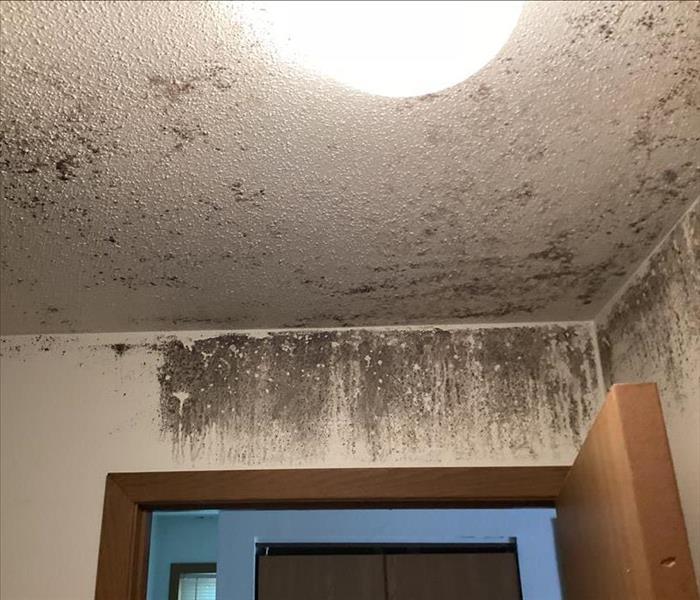 While store-bought mold removers can help with small, visible mold problems, they often don’t provide a permanent solution.
While store-bought mold removers can help with small, visible mold problems, they often don’t provide a permanent solution.
When mold shows up in your home, the first instinct might be to grab a store-bought mold remover and tackle the problem yourself. It seems like a quick, easy fix, right? But the truth is, while these products might help in some cases, they often fall short of what’s needed for a thorough mold cleanup. Here is why relying only on store-bought mold removers might not solve the problem for good.
What Are Store-Bought Mold Removers?
Store-bought mold removers are readily available products designed to clean mold off surfaces. They usually come in spray bottles or as foams and are marketed as effective solutions for getting rid of mold stains and preventing future growth. However, these products can only go so far, especially when dealing with more extensive mold issues or mold that has penetrated deep into surfaces.
The Limitations of Store-Bought Mold Removers
Before you decide to handle mold on your own, it’s important to know what these store-bought products can and can't do:
Only Cleans the Surface
Most store-bought mold removers are designed to clean visible mold off the surface. While that might seem like it's solving the problem, mold often grows deep within porous materials like drywall, wood, and insulation. These products might make things look clean on the outside, but they don’t reach the mold that’s growing inside the material. This can lead to mold coming back because the root of the problem hasn’t been dealt with.
Not Effective for Large or Hidden Mold Problems
Mold doesn’t always grow out in the open where you can see it. It often spreads behind walls, under floors, or in other hidden areas. According to the Environmental Protection Agency, if mold covers more than 10 square feet or is hidden in places like behind walls or ceilings, you’re better off calling in a professional. Store-bought mold removers just aren’t made to handle these kinds of hidden mold issues effectively.
Doesn’t Prevent Mold from Coming Back
Many store-bought mold removers are good for a quick cleanup, but they don’t provide a long-term solution. If the moisture problem that caused the mold in the first place isn’t fixed, mold is likely to return. Store-bought products don’t usually have the necessary ingredients to prevent mold from growing back, especially if they don't address the underlying moisture issue.
Why Professional Mold Remediation Is the Better Choice
There are several reasons why professional mold remediation services are more effective than store-bought mold removers:
Detailed Inspection and Assessment
Professionals start with a detailed inspection to find out just how far the mold has spread and what's causing it. They use advanced tools, like moisture meters and thermal imaging cameras, to detect mold that you can't see with the naked eye.
Deep Cleaning with Specialized Equipment
Mold remediation experts use specialized cleaners and equipment that go deeper into materials, reaching mold spores that store-bought products can’t. This thorough approach helps make sure the mold is gone for good.
Fixing the Root Cause
Mold needs moisture to grow, so professionals don’t just remove the mold—they also help find and fix the moisture problem, whether it’s a leak, poor ventilation, or something else. This step is crucial in preventing mold from coming back.
Safe and Controlled Mold Removal
Professionals follow strict safety procedures to remove mold safely, without spreading spores to other areas of your home. This careful approach helps ensure that all the mold is removed and doesn’t spread.
When to Call in the Professionals
While small, surface-level mold issues might be manageable with store-bought products, there are certain situations where professional mold remediation is definitely the way to go:
- The mold covers more than 10 square feet or is widespread.
- The mold is in hard-to-reach or hidden areas, like behind walls or under flooring.
- There's a persistent musty smell, which could indicate hidden mold.
- Previous attempts to clean the mold yourself haven’t worked, or the mold keeps coming back.
- There’s an ongoing moisture issue, like a leak or poor ventilation, that needs to be fixed.
Don’t Rely on Temporary Fixes
While store-bought mold removers can help with small, visible mold problems, they often don’t provide a permanent solution. For long-lasting results, trust the professionals at SERVPRO of La Crosse County. Contact us today to learn more about our mold remediation services and how we can help you keep your home safe and clean.
Salvaging vs. Replacing: What to Consider After Water Damage
10/16/2024 (Permalink)
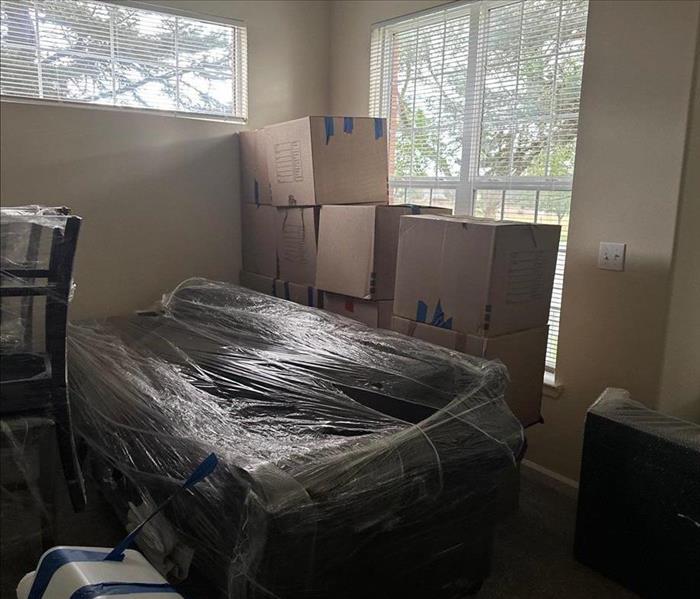 If you need your belongings to be restored, call SERVPRO!
If you need your belongings to be restored, call SERVPRO!
Water damage can be a significant concern for homeowners and business owners alike. When faced with the aftermath of a water intrusion, one of the key decisions you'll need to make is whether to salvage or replace damaged items and materials. At SERVPRO®, we understand that this decision can be challenging, so we've outlined some crucial factors to consider when determining whether to salvage or replace items affected by water damage.
Assessing the Extent of Water Damage
The first step in deciding between salvaging or replacing is to thoroughly assess the extent of the water damage. This involves examining all affected areas to determine how deeply the water has penetrated materials and structures. For instance, while drywall and insulation can often be replaced, hardwood floors and structural elements may sometimes be salvaged if the damage is minimal and prompt action is taken. The key is to evaluate whether the damage has compromised the integrity of the material or structure.
Considerations for Salvaging
Salvaging involves restoring items or materials to their pre-damaged condition. This approach can be both cost-effective and environmentally friendly. For example, if you have high-quality furniture, antiques, or flooring that has been damaged, professional water damage restoration services can often save these items through specialized cleaning and drying techniques. Salvaging is usually viable if the damage is limited to surface-level issues or if the items can be dried and cleaned effectively.
When Replacement is Necessary
In some cases, replacement is the more practical option. If the water damage has caused severe structural issues, such as warping or rotting of wood, or if it has led to mold growth, replacement may be necessary to ensure safety and prevent further complications. Additionally, certain materials, such as insulation or carpeting, may be beyond repair if they have been soaked for an extended period or if they have been contaminated by contaminated water.
Professional Assessment and Restoration
Engaging with a professional water damage restoration service is essential in making an informed decision between salvaging and replacing. SERVPRO’s experienced team can conduct a detailed assessment to determine the extent of the damage and recommend the best course of action. Our experts use advanced equipment and techniques to evaluate and restore affected areas effectively. Whether it’s drying out materials, cleaning surfaces, or handling complex restoration tasks, professional services ensure that your property is restored to its original condition, or replaced with quality materials if necessary.
Deciding between salvaging and replacing after water damage involves careful consideration of the extent of the damage, the type of materials affected, and the potential for effective restoration. By working with a professional restoration service like SERVPRO, you can make informed decisions and ensure that your property is properly restored or repaired. Whether you choose to salvage or replace, prompt action and expert guidance are crucial to mitigating the effects of water damage and maintaining the integrity of your home or business.
Understanding Structural Damage from Fire and Smoke: A SERVPRO® Guide
8/21/2024 (Permalink)
In La Crosse, WI, like many other areas, the threat of fire is a reality that homeowners and property managers must be prepared to face. Beyond the immediate danger posed by flames, the aftermath of a fire can leave behind significant structural damage, particularly from smoke. Understanding the nature of this damage and how to address it is crucial for restoring homes and buildings to their pre-fire condition. In this blog, we'll delve into the types of structural damage caused by fire and smoke and explore the role of SERVPRO of La Crosse County in the restoration process.
The Impact of Fire and Smoke Damage
- Charring and Burned Materials: Direct exposure to flames can cause charring and burning of structural elements such as walls, ceilings, floors, and support beams. This damage weakens the integrity of the structure and compromises its safety.
- Smoke Residue: Smoke, even from a relatively small fire, can permeate surfaces throughout a building, leaving behind a thick layer of residue. This residue can be acidic and corrosive, causing further damage to materials like wood, drywall, and metal.
- Soot and Ash: Fine particles of soot and ash can settle on surfaces both near and far from the source of the fire. These particles are not only unsightly but can also pose health risks if inhaled or ingested.
- Odor Penetration: The distinctive smell of smoke can linger long after a fire has been extinguished. Smoke odors can penetrate porous materials like upholstery, carpets, and curtains, making them difficult to remove without professional intervention.
Addressing Structural Damage with SERVPRO
- Assessment and Mitigation: The first step in restoring a property damaged by fire and smoke is a thorough assessment of the extent of the damage. SERVPRO® technicians are trained to identify all affected areas and develop a comprehensive mitigation plan to prevent further deterioration.
- Cleaning and Deodorization: SERVPRO utilizes advanced cleaning techniques and specialized equipment to remove soot, smoke residue, and odors from affected surfaces. This process may involve HEPA vacuuming, dry cleaning, wet cleaning, and ozone treatments to ensure thorough restoration.
- Structural Repairs: In cases of significant structural damage, SERVPRO works with qualified contractors to repair and rebuild damaged components of the building. From replacing charred drywall to reinforcing compromised support structures, every effort is made to restore the property to its pre-fire condition safely and efficiently.
- Content Restoration: SERVPRO also offers content cleaning and restoration services to salvage belongings damaged by fire and smoke. Items such as furniture, clothing, electronics, and documents can often be cleaned and restored to their preloss condition using specialized techniques and equipment.
Fire and smoke damage can have a devastating impact on homes and buildings in La Crosse, WI, but with the help of SERVPRO, the road to recovery can be smoother and more efficient. By understanding the nature of structural damage caused by fire and smoke and knowing how to address it effectively, property owners can take the first steps toward restoring their properties and reclaiming their peace of mind.
Harnessing Technology for Enhanced Storm Preparedness and Recovery
8/12/2024 (Permalink)
Technology plays a crucial role in enhancing storm preparedness and recovery efforts. From early warning systems to advanced recovery tools, technological advancements have significantly improved our ability to anticipate, respond to, and recover from storm events. This blog explores the various ways technology is revolutionizing storm preparedness and recovery.
Early Warning Systems
- Weather Forecasting: Advanced meteorological tools and models enable more accurate weather predictions, providing crucial lead time before storms hit.
- Alert Systems: Apps, text alerts, and automated phone calls notify residents of impending storms, giving them time to take necessary precautions.
- Satellite Imagery: Satellites monitor weather patterns and provide real-time data, aiding in the early detection of severe weather.
Communication Tools
- Social Media: Platforms like Twitter and Facebook allow emergency services to disseminate information quickly and widely.
- Mobile Apps: Apps such as FEMA and Red Cross provide real-time updates, emergency plans, and safety tips.
- Two-Way Radios: Essential for areas where cellular networks may be disrupted, ensuring continuous communication.
Emergency Management Software
- Incident Management Systems: Software like WebEOC helps coordinate response efforts by tracking resources, personnel, and incidents in real-time.
- GIS Mapping: Geographic Information Systems (GIS) provide detailed maps showing affected areas, helping responders allocate resources effectively.
Drones
- Damage Assessment: Drones equipped with cameras and sensors can quickly survey storm damage, providing high-resolution images and data.
- Search and Rescue: Drones can assist in locating missing persons in hard-to-reach areas.
- Delivery: In emergencies, drones can deliver essential supplies such as medicine and food to isolated areas.
Smart Home Technology
- Home Monitoring Systems: Smart sensors detect issues like flooding or structural damage and alert homeowners immediately.
- Remote Control: Homeowners can control and monitor their home systems (e.g., security cameras, thermostats) remotely via smartphones.
Data Analytics
- Predictive Analysis: Analyzing historical weather data helps predict future storm patterns and potential impacts, aiding in preparedness planning.
- Risk Assessment: Data-driven tools assess vulnerability and risk, helping communities develop more effective storm response strategies.
Resilient Infrastructure
- Smart Grids: These modernized electrical grids can reroute power and reduce outage times during storms.
- Flood Barriers: Technologically advanced flood barriers can be automatically deployed to protect critical infrastructure.
Recovery Technology
- 3D Printing: This technology can be used to quickly produce replacement parts for damaged infrastructure.
- Robotics: Robots can assist in clearing debris and making repairs in hazardous conditions.
- Portable Water Purifiers: Advanced purifiers provide clean drinking water in areas where the supply has been contaminated.
Technology has become an indispensable part of storm preparedness and recovery, offering tools and systems that improve our ability to respond to and recover from severe weather events. From early warning systems and communication tools to advanced recovery technologies, these innovations enhance our resilience against storms. By leveraging technology, SERVPRO of La Crosse County, Adams, Crawford, Vernon, South Monroe & South Juneau can better protect our communities and ensure a quicker, more efficient recovery process. Investing in and embracing these technological advancements is essential for a safer and more prepared future. Trust SERVPRO® to help restore your home after storm or water damage in La Crosse, WI.
Natural and Safe Mold Cleaning Products for Your Home
7/17/2024 (Permalink)
Dealing with mold in your home can be a daunting task, but with the right cleaning products, you can effectively remove mold and prevent its return. However, it's essential to choose cleaning products that are safe for both you and the environment. Here are some safe and effective mold-cleaning products that you can use in your home:
1. Vinegar
Vinegar is a natural and versatile cleaning agent that can effectively kill mold and inhibit its growth. Its acidic nature makes it an excellent mold-fighting solution. Simply pour undiluted white vinegar into a spray bottle and apply it directly to the mold-affected areas. Let it sit for at least an hour before scrubbing the surface with a brush and rinsing it with water.
2. Hydrogen Peroxide
Hydrogen peroxide is another effective mold-cleaning agent that is safe to use in your home. It has strong antifungal and antibacterial properties that can kill mold spores on contact. Mix equal parts hydrogen peroxide and water in a spray bottle and spray it onto the moldy surface. Allow it to sit for 10-15 minutes before wiping it clean with a damp cloth.
3. Baking Soda
Baking soda is a mild abrasive that can help scrub away mold from surfaces while also neutralizing odors. Make a paste by mixing baking soda with water and apply it to the moldy areas. Use a brush or sponge to scrub the surface gently, then rinse with water. Baking soda is safe to use on various surfaces, including walls, countertops, and tile grout.
4. Tea Tree Oil
Tea tree oil is a natural antifungal agent that can effectively kill mold and prevent its recurrence. Mix one teaspoon of tea tree oil with one cup of water in a spray bottle and shake well. Spray the solution onto the moldy surface and let it sit for several hours or overnight. Wipe the area clean with a damp cloth, and the mold should be gone.
5. Commercial Mold Cleaners
If you prefer to use a commercial mold cleaner, look for products that are labeled as environmentally friendly and non-toxic. Many eco-friendly brands offer effective mold-cleaning solutions that are free from harsh chemicals and safe to use around pets and children. Be sure to follow the manufacturer's instructions carefully when using any cleaning product.
How SERVPRO® Can Help
In addition to using safe and effective mold cleaning products, another option to consider for your mold remediation needs is seeking professional assistance from SERVPRO of La Crosse County. Our team of experts is trained and equipped to handle mold remediation projects of any size, ensuring thorough and effective removal of mold from your home. With years of experience in the industry, we use advanced techniques and state-of-the-art equipment to identify and eliminate mold growth, addressing underlying moisture issues to prevent future recurrence. By choosing SERVPRO for your mold remediation needs, you can have peace of mind knowing that your home is in capable hands and will be restored to a safe and healthy environment.
Using safe and effective mold cleaning products is essential for maintaining a healthy indoor environment. Whether you opt for natural remedies like vinegar and baking soda or eco-friendly commercial cleaners, choosing the right products can help you effectively remove mold and prevent its return in your home.
Water Damage from Appliances: Protecting Your Home from Washing Machines, Dishwashers, More
6/12/2024 (Permalink)
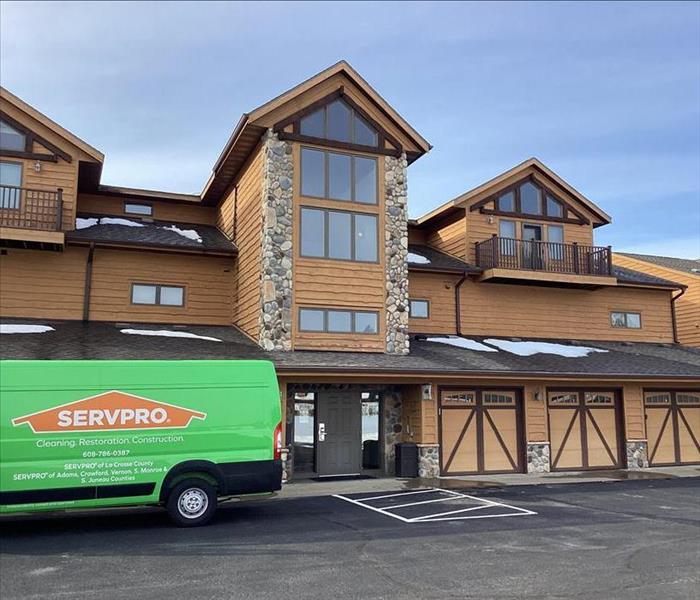 Explore the potential risks of water damage from appliances and provide essential tips to protect your home.
Explore the potential risks of water damage from appliances and provide essential tips to protect your home.
Appliances such as washing machines, dishwashers, and others have become indispensable in our daily lives. However, they can also be a source of water damage if not properly maintained. In this blog, we will explore the potential risks of water damage from appliances and provide essential tips to protect your home.
Washing Machines
Washing machine leaks are a common cause of water damage in homes. Inspect your washing machine regularly for signs of wear, such as cracks or loose connections. Replace faulty hoses or fittings immediately. Additionally, avoid overloading the machine as it can cause excessive vibrations and lead to leaks.
Dishwashers
Dishwashers can also be a source of water damage if not maintained properly. Check the dishwasher's water supply line and ensure it is tightly connected and free from cracks or kinks. Inspect the dishwasher door seal regularly and clean any debris or residue that may prevent a proper seal. Run a test cycle occasionally to ensure there are no leaks or drainage issues.
Refrigerators with Ice Makers
Refrigerators with built-in ice makers can pose a risk of water damage if not properly maintained. Inspect the ice maker supply line to ensure it is securely connected and not damaged. Regularly clean and replace the water filter as recommended by the manufacturer. If you notice any leaks or excessive moisture around the ice maker, address the issue promptly.
Water Heaters
Water heaters are vital appliances but can also cause significant water damage if they fail or leak. Regularly inspect your water heater for signs of corrosion, leaks, or rust. Drain the tank annually to remove sediment buildup. If you notice any issues, contact a professional plumber to address the problem and prevent potential water damage.
Tips for the Kitchen
Apart from specific appliances, the kitchen itself can be susceptible to water damage. Check under the sink regularly for any signs of leaking or moisture buildup. Ensure that the waterproof seal on your kitchen countertops is intact and reseal if necessary. Regularly clean and inspect the dishwasher drain for clogs or debris that can cause backups and leaks.
Professional Maintenance and Inspection
Schedule regular professional maintenance and inspection for your appliances. A qualified technician can identify potential issues before they cause major damage. They can also clean your appliances, ensuring optimal performance and reducing the risk of water damage.
Be Prepared for Emergencies
Despite your preventative measures, accidents can still happen. Be prepared for water damage emergencies by knowing the location of your main water shut-off valve. Familiarize yourself with the steps to turn off the water supply in case of a sudden leak or appliance malfunction.
Water damage from appliances poses a significant risk to your home. By following these essential tips, such as regularly inspecting your appliances, maintaining and repairing them as necessary, and being prepared for emergencies, you can minimize the risk of water damage. However, it's important to remember that professional help is always recommended in cases of water damage. SERVPRO® specializes in water damage restoration and has the expertise and equipment to mitigate and restore your home in the event of water damage from appliances or other sources.
By taking proactive measures and engaging the services of a reputable restoration company, you can safeguard your home from water damage and ensure the longevity of your appliances.
Wisconsin's Unique Storm Vulnerabilities and How to Address Them
5/15/2024 (Permalink)
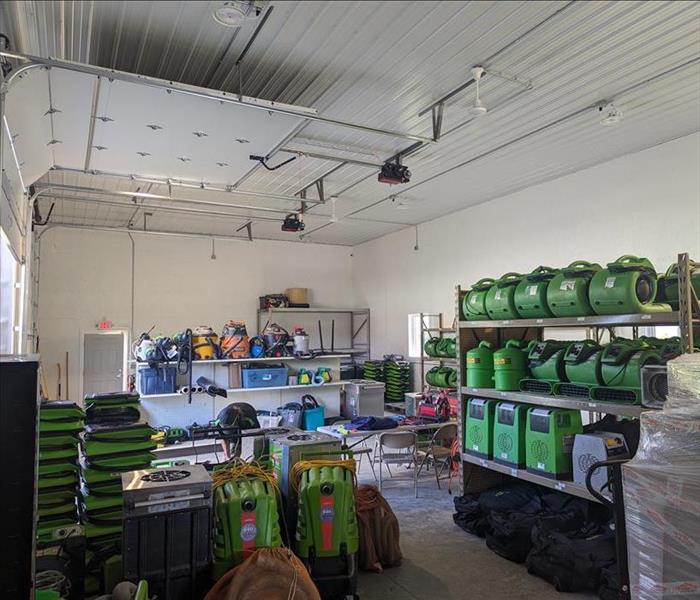 Explore the different types of storms that may affect the community in Wisconsin and how to address them with SERVPRO!
Explore the different types of storms that may affect the community in Wisconsin and how to address them with SERVPRO!
Wisconsin is a state that is known for its stunning natural beauty. However, this beauty can be quickly overshadowed when the state is hit by severe weather. Wisconsin sees a range of storms throughout the year, from blizzards in the winter to thunderstorms and tornadoes in the spring and summer. Homeowners need to have a storm damage plan in place, no matter the season. In this blog, we will explore the different types of storms that may affect the community in Wisconsin and how to address the storm damage.
Storm Categories
Before we delve deeper into the different types of storms, it is essential to understand the storm categories. The National Weather Service (NWS) has categorized storms based on their severity. These categories are:
- Minor storms – Generally, these storms have wind speeds between 23 and 38 mph. They may cause some damage, but it is usually minimal.
- Moderate storms – Moderate storms have wind speeds between 39 and 74 mph. These storms can cause damage to roofs, trees, and power lines.
- Major storms – Major storms have wind speeds between 75 and 110 mph. They can cause significant damage to buildings, trees, and power lines.
- Severe storms – Severe storms have wind speeds over 110 mph. These storms can cause widespread damage to buildings, trees, cars, and anything else in their path.
Types of Storms
Wisconsin experiences a range of storms throughout the year. Here are some of the most common storms that can affect the state:
- Thunderstorms – Thunderstorms are a common occurrence in Wisconsin during the spring and summer months. Thunderstorms can bring heavy rain, lightning, and strong winds. They can cause damage to buildings, trees, and power lines. It is essential to have a storm emergency plan in place if you live in an area prone to thunderstorms.
- Tornadoes – Tornadoes are a severe weather phenomenon that can happen in Wisconsin, especially during the summer months. Tornadoes are dangerous, and it is essential to have a storm emergency plan in place to protect yourself and your family.
- Blizzards – Wisconsin is no stranger to severe winter weather. Blizzards can bring heavy snow, and strong winds, and cause power outages. It is essential to be prepared for a potential blizzard by having an emergency kit ready.
Storm Damage Help
If you live in an area affected by storms, it is crucial to be prepared for any potential damage. SERVPRO® is here to help when disaster strikes. Our team of experts is available 24/7 to provide storm damage help, no matter the severity of the storm. We understand the importance of having a plan in place, and we can help you develop a storm damage plan for your home. In the event of a storm, our team is equipped to handle any storm damage cleanup and restoration needs.
Living in Wisconsin, it is imperative to understand the different types of storms that can occur and how to address the storm damage. Having a storm damage plan in place can help protect you and your family from potential harm. Remember to stay informed about the weather in your area and take action when necessary. If you do experience storm damage, know that SERVPRO is here to help. Contact us to learn more about our storm damage cleanup and restoration services.
Understanding Structural Damage from Fire and Smoke
4/17/2024 (Permalink)
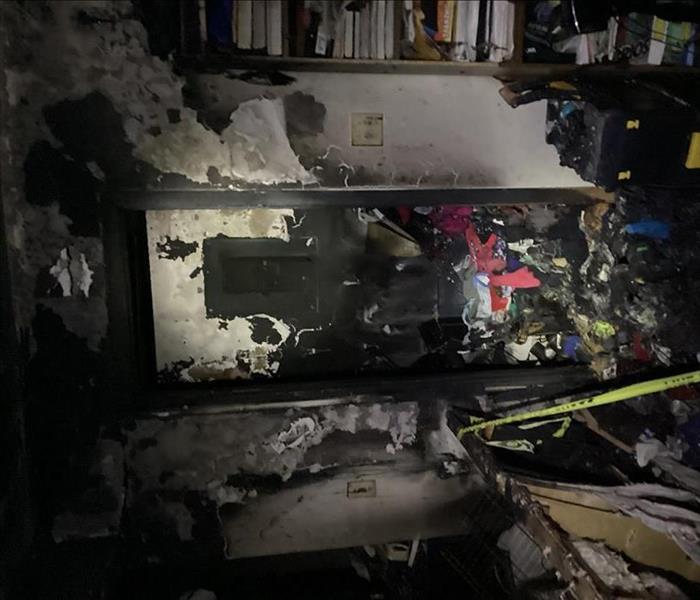 In this blog, we will explore the impact of fire and smoke on the structural integrity of a building.
In this blog, we will explore the impact of fire and smoke on the structural integrity of a building.
Experiencing a fire in your home is a traumatic event that can cause significant structural damage. Understanding how fire and smoke damage can affect the structure of your property is crucial for effective fire damage remediation. In this blog, we will explore the impact of fire and smoke on the structural integrity of a building and provide valuable insights on what to do if you experience structural fire damage.
How Fire and Smoke Damage Cause Structural Damage
- Direct Fire Contact: When a fire spreads throughout a building, it can directly affect the structural components such as walls, floors, ceilings, and beams. Prolonged exposure to high temperatures weakens these materials, compromising their strength and stability.
- Thermal Expansion and Contraction: The extreme heat generated by a fire causes materials to expand, putting stress on the structural elements. As the fire is extinguished, the rapid cooling causes contraction, which can further damage weakened components.
- Weakening of Load-bearing Structures: Fire can weaken load-bearing walls, beams, and columns, compromising the overall structural integrity of the building. This can lead to structural collapse if not properly assessed and repaired.
- Smoke and Soot: Smoke and soot, generated by burning materials, can penetrate the structure, settling on surfaces and within void spaces. These particles can corrode metal, stain surfaces, and emit harmful odors. Additionally, the acidity in smoke can accelerate the deterioration of materials over time.
Responding to Structural Fire Damage
- Ensure Safety: Before entering a property that has experienced a structural fire, ensure that it has been deemed safe by professionals. Fire damage restoration experts, such as SERVPRO®, can evaluate the safety of the structure and provide guidance.
- Document the Damage: Take detailed photographs or videos of the structural fire damage, including affected areas and individual components. This documentation will be essential for insurance claims and fire damage restoration processes.
- Secure the Property: If the structural damage is severe, make sure to secure the property to prevent further damage or potential theft. Board up broken windows and doors, and cover openings in the roof to protect against the elements.
- Professional Assessment: Contact a reputable fire damage restoration company to assess the extent of the structural damage. Trained technicians will conduct a thorough inspection, identifying compromised areas and developing a comprehensive restoration plan.
- Structural Stabilization: In cases of significant structural damage, stabilization may be necessary before the restoration process can begin. This may involve temporary supports or shoring to ensure safety during repairs.
- Restoration and Repairs: Once the structure is safely stabilized, the fire damage restoration process can start. Skilled professionals will remove debris, clean and sanitize affected surfaces, repair or replace damaged structural elements, and restore the property to its pre-fire condition.
Structural damage from fire and smoke can have a lasting impact on the safety and stability of your property. Understanding the causes and effects of fire damage on the structure is vital when responding to a fire incident. Promptly documenting the damage, securing the property, and seeking professional assessment are crucial to ensure a safe restoration process. Partnering with a trusted fire damage restoration company like SERVPRO will ensure that the structural fire damage is addressed comprehensively and efficiently, helping you restore your home to its pre-fire condition.
The SERVPRO® Mold Remediation Process: Step by Step
3/13/2024 (Permalink)
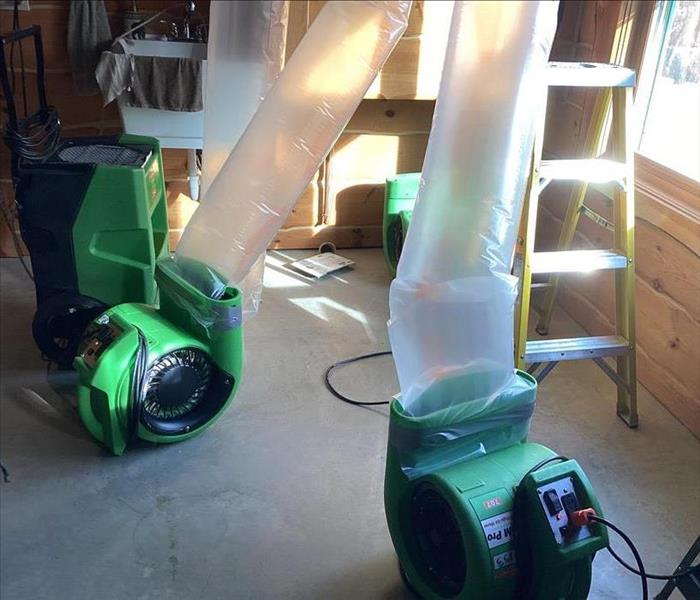 It's essential to understand the process of mold remediation and how it can effectively remove and prevent the reoccurrence of mold growth.
It's essential to understand the process of mold remediation and how it can effectively remove and prevent the reoccurrence of mold growth.
When it comes to mold damage in your home or business, it's essential to understand the process of mold remediation and how it can effectively remove and prevent the reoccurrence of mold growth. SERVPRO®, a leading provider of mold remediation services, follows a comprehensive seven-step process to ensure the thorough removal and restoration of mold-damaged areas. In this blog, we will explore the SERVPRO Mold Remediation Process step by step.
Step 1: Emergency Contact
The mold cleanup and restoration process begins with a simple phone call to SERVPRO. When you reach out to them, their representative will ask a series of questions to assess the resources, equipment, and personnel required to address your specific mold damage situation.
Step 2: Inspection and Mold Damage Assessment
Once they have gathered the necessary information, the SERVPRO team will conduct a thorough inspection of the affected area. Through advanced technologies and expertise, they can detect both visible and hidden mold growth and identify the root causes of the mold problem.
Step 3: Mold Containment
To prevent the spread of mold spores during the remediation process, the SERVPRO® team uses various containment procedures. Negative air chambers and negative air pressure are established to isolate the contaminated areas, minimizing the risk of cross-contamination.
Step 4: Air Filtration
SERVPRO® professionals employ specialized filtration equipment, including air scrubbers and HEPA vacuums, to capture microscopic mold spores from the air. By utilizing these powerful tools, prevents the further spread of mold spores throughout your property.
Step 5: Removing Mold and Mold-Infested Materials
Once the containment and air filtration systems are in place, the team starts the process of mold removal. They use antifungal and antimicrobial treatments to eliminate mold colonies and prevent new colonies from forming. In severe cases of mold damage, mold-infested porous materials like drywall and carpeting may need to be removed and properly disposed of.
Step 6: Cleaning Contents and Belongings
Mold can not only affect the structure of your property but also damage your belongings. The SERVPRO® team is trained to clean and disinfect your furniture, decorative items, clothing, and other restorable items affected by mold. They utilize a variety of cleaning techniques to ensure the removal of mold and its odors.
Step 7: Restoration
The final step in the SERVPRO Mold Remediation Process involves restoring your property to its pre-mold damage condition. Depending on the extent of the damage, this may include minor repairs like replacing drywall and painting or more significant reconstruction work. SERVPRO® is equipped to handle all aspects of the restoration process, ensuring your property is restored to its original state.
By following this comprehensive seven-step process, SERVPRO ensures that mold damage is effectively addressed and your property is restored to a clean and healthy environment. Their trained professionals use advanced techniques and equipment to remove mold, prevent its reoccurrence, and restore your property efficiently.
If you are facing mold damage in your home or business, contact SERVPRO to benefit from their expertise in mold remediation. Through their meticulous process, they will effectively fix mold damage and help you regain a safe and healthy living or working environment.
Remember, it's important to address mold damage promptly and seek professional assistance to ensure it is properly handled. Let SERVPRO take care of your mold remediation needs and restore your property "Like it never even happened."






 24/7 Emergency Service
24/7 Emergency Service


